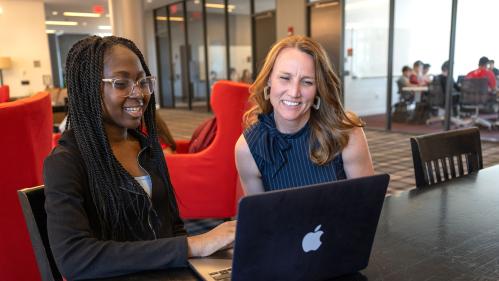Course Content Accessibility
Making Learning Accessible for All: Meeting ADA Title II Standards
At Rutgers, we are committed to fostering an inclusive academic environment where everyone can access digital and educational resources. Accessibility is more than a legal requirement, it’s a reflection of our core values.
In April 2024, the U.S. Department of Justice updated Title II of the Americans with Disabilities Act, clarifying that digital materials must be accessible and usable. Public universities, such as Rutgers, must ensure that all websites, learning platforms, documents, and digital content meet the Web Content Accessibility Guidelines (WCAG) 2.1 AA by April 24, 2026, with limited exceptions.
Why Course Accessibility is Essential for Inclusive Education
Course accessibility ensures that all students can fully participate in learning, whether accessing course materials, engaging in online discussions, or using adaptive tools.
Inclusive course design helps instructors to support diverse learners by using readable documents, captions, alternative formats, and accessible technologies. Creating accessible learning experiences is a key part of inclusive education at Rutgers.
To Begin
To initiate strategic planning for a school's course content accessibility, unit leadership should work in partnership with Rutgers Access and Disability Resources (RADR) to develop a plan that addresses accessibility needs. RADR can provide guidance, resources, and support throughout this process.
To begin, unit leaders or their designees can complete the Course Accessibility Benchmark Form to the best of their ability. Faculty and Instructors interested in learning more or contributing to the process may visit University Online Education Services (UOES) to explore accessibility resources.
How Do You Support Students?
Choose the option that best describes your role to find tailored guidance and resources.

Accessibility Guides, Tools, Training, and Support
From quick-start guides to policy checklists and FAQs—everything you need to build accessible learning environments in one place.